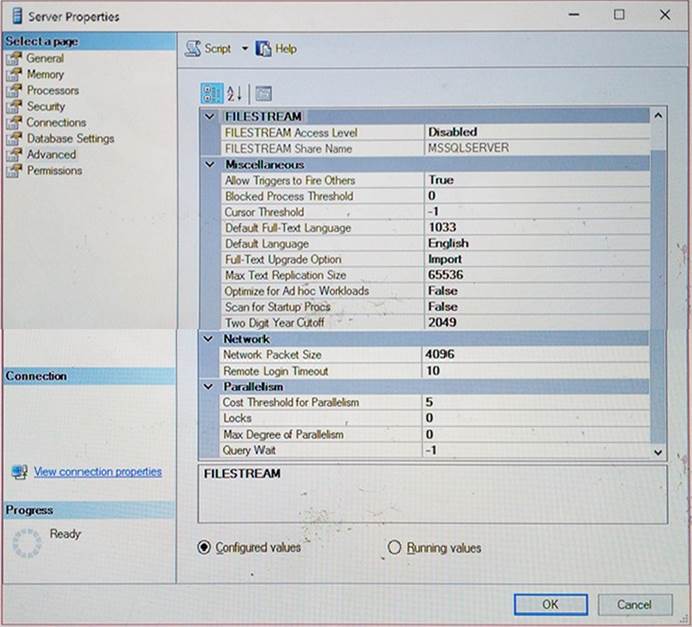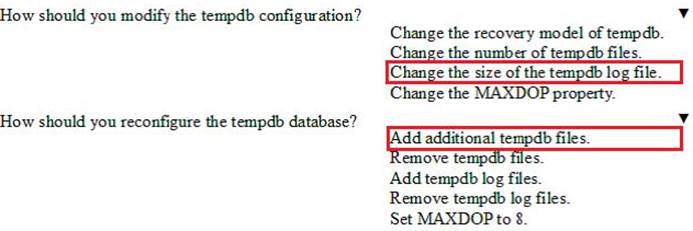Topic 4, automobile parts Case Study 1
Background
You manage the Microsoft SQL Server environment for a company that manufactures and sells automobile parts.
The environment includes the following servers: SRV1 and SRV2. SRV1 has 16 logical cores and hosts a SQL Server instance that supports a mission-critical application. The application has approximately 30,000 concurrent users and relies heavily on the use of temporary tables.
The environment also includes the following databases: DB1, DB2, and Reporting. The Reporting database is protected with Transparent Data Encryption (TDE). You plan to migrate this database to a new server. You detach the database and copy it to the new server.
You are performing tuning on a SQL Server database instance. The application which uses the database was written using an object relationship mapping (ORM) tool which maps tables as objects within the application code. There are 30 stored procedures that are regularly used by the application.

HOTSPOT
You need to optimize SRV1.
What configuration changes should you implement? To answer, select the appropriate option from each list in the answer area.

Answer: 
Explanation:
From the scenario: SRV1 has 16 logical cores and hosts a SQL Server instance that supports a mission-critical application. The application hasapproximately 30,000 concurrent users and relies heavily on the use of temporary tables.
Box 1: Change the size of the tempdb log file.
The size and physical placement of the tempdb database can affect the performance of a system. For example, if the size that is defined for tempdb is too small, part of the system-processing load may be taken up with autogrowing tempdb to the size required to support the workload every time you restart the instance of SQL Server. You can avoid this overhead by increasing the sizes of the tempdb data and log file.
Box 2: Add additional tempdb files.
Create as many files as needed to maximize disk bandwidth. Using multiple files reduces tempdb storage contention and yields significantly better scalability.
However, do not create too many files because this can reduce performance and increase management overhead. As a general guideline, create one data file for each CPU on the server (accounting for any affinity mask settings) and then adjust the number of files up or down as necessary.

Leave a Reply